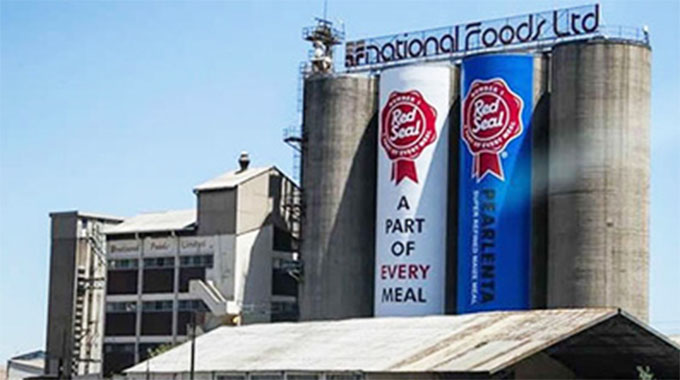Value addition strategies
Dr Gift Mugano
In pursuit of a new trajectory of accelerated economic growth and wealth creation, Government formulated a new plan known as the Zimbabwe Agenda for Sustainable Socio-Economic Transformation: October 2013-December 2018.Zim-Asset was crafted to achieve sustainable development and social equity anchored on indigenisation, empowerment and employment creation which will be largely propelled by the judicious exploitation of the country’s abundant human and natural resources.
Zim-Asset is building on four strategic clusters identified which are Food Security and Nutrition; Social Services and poverty eradication; infrastructure and utilities; and value addition and beneficiation. In the same vein, the Southern African Development Community Summit in its deliberations last week adopted a position for industrial development through value addition.
My discussion this week is centred on the value addition and beneficiation cluster with specific interest to unpack possible strategies for value addition. In this discussion, for illustration purposes, agricultural sector is chosen as an example.
By definition, value addition is the process of changing the product’s value by changing its current place, time, and form characteristics to characteristics more preferred in the marketplace.
As a specific example, a more narrow definition would be to economically add value to an agricultural product (such as wheat) by processing it into a product (such as flour) desired by customers (such as bread bakers). Producers involved in adding value should think of themselves as members of a food company that processes and markets product to consumers.
Often, this may involve building processing plants in the producers’ geographical regions to process locally produced crops or animals as envisaged in the Zim-Asset, that is, establishment of an avocado processing plant with a capacity of producing 14 million litres of oil per annum. Adding value to products can be accomplished in a number of different ways, but generally falls into one of two main types: innovation or coordination. In general, the problem is to evaluate what, where, how, and who can efficiently perform the marketing functions.
Innovation focuses on improving existing processes, procedures, products, and services or creating new ones. Often, successful value-added ideas focus on very narrow, highly technical, geographically large markets where competition is sparse.
Innovative value-added activities developed on farms or at agricultural experiment stations are sources of national growth through changes either in the kind of product or in the technology of production. This is the case of the ethanol plant in Chisumbanje. On a small scale, drying of onions and drying of salted ground nuts (chimukuyu chenzungu) are good examples of such innovations which can take place at farm level by a peasant farmer! By encouraging innovative ideas, adding value becomes a reality.
Innovation also can come from research about alternative crops that can be grown successfully by producers to replace traditional crops. This is exactly the work which is being spearheaded by seed houses like Seed-Co, Panner and Pioneer seeds. Value-added is if producers are able to economically profit by growing these alternative crops instead of traditional crops.
A specific type of innovation is industrial innovation, which is processing traditional crops into non-food end uses. These value-adding innovative activities use the research and emphasis that has been placed on finding industrial, non-food uses for common agricultural products.
Several innovative processes have been developed to transform traditional crops into non-food products. Examples of these ventures include producing ethanol from sugar cane, biodiesel from soya beans, and particleboard from straw. With respect to coordination, the focus is on arrangements among those that produce and market farm products. Coordination mechanisms can either be horizontal or vertical.
Horizontal coordination involves pooling or consolidation among individuals or companies from the same level of the food chain.
An example would be maize producers combining their market produce to make a truckload. This is an important strategy which can help farmers to build critical mass, build economies of scales in production and marketing of their produce.
In most cases, farmer’s efforts are based on individualism which obviously results in lower outcomes in terms of productivity.
On may need to consider the need to realign our existing institutions in the agricultural sector to go beyond just giving technical advice on farming techniques to the economics of farming which deals with collaborations. This can be done through the establishment of clusters. International experience have shown that fundamental changes through coordination can alter traditional marketing relationships that link consumers, food retailers and wholesalers, food processors, and producers.
However, individual producers usually do not have sufficient levels of production to effectively produce, process, and market their products. Few individuals possess all of the very different skills necessary for processing, marketing, and business management, as well as staying efficient with their production enterprises. Therefore, a coordinated effort is needed to increase market efficiency or cost reduction.
Vertical coordination includes contracting, strategic alliances, licensing agreements, and single ownership of multiple market stages in different levels of the food chain.
Vertical coordination, either through ownership integration or contractual arrangements, is necessary to link production processes and product characteristics to the preferences of consumers and processors. This is already happening!
Companies like Delta and BAT are actively involved in contract farming with grain and tobacco farmers, respectively. There is scope for us to have more companies on board since there is business case for the private sector, farmers and Government.
In order to bring more players on board, Government may need to consider tax incentives for participating companies. These incentives can take form of cuts in corporate tax for such companies.
Complete vertical integration aligns and controls all of the segments of a production and marketing system under single ownership. The factors aligned and controlled are price, quantity, quality, and transactional terms of exchange.
Producers who invest in value-added projects past the farm gate cause the market to become more vertically integrated.
To be continued
Dr Mugano is an Economic Advisor, Author and Expert in Trade and Competitiveness. He is a Research Associate of Nelson Mandela Metropolitan University.






Comments